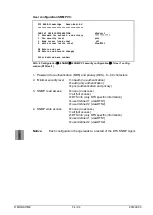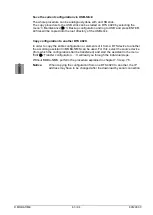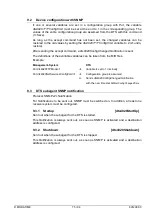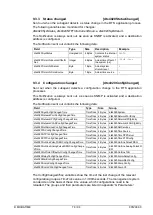
© MOBATIME
64 / 94
801299.00
8
Time administration
8.1
Concept of time administration
The device runs on UTC (Universal Time Coordinated).
***
PTP is always TAI (PTP timescale)
8.2
Synchronization process & diagram
The time that the DTS 4020 maintains is referred to as System time. The System Time
is used to supply time to all of the available time of day outputs (such as NTP time
stamps, PTP time stamps, etc.).
System time can be synchronized to different time references. All configured sources
are monitored simultaneously but the DTS can only synchronize to one source at the
time.
Multiple configured sources allow redundancy on time reference side. The following
sources are supported:
-
PTP (default)
-
SyncE
-
Frequency
-
NTP (future option)
Each source has a user assigned priority that defines the source change process on a
source error (e.g. priority 1 source PTP loses reception. If SyncE had priority 2, the
DTS would change source and synchronize to SyncE.)
The flow chart below illustrates how the DTS 4020 synchronizes to the available time
sources.
1. On system startup, the DTS waits until the oscillator reaches stable state.
2. Then it waits for an available source to set system time (usually it uses the first
source that is available, not necessarily source with priority 1).
3. As soon as system time is within nanoseconds to its source, outputs will be
enabled and system time OK flag set.
4. In normal operation (system time set), all configured sources are monitored
simultaneously.
5. If the active source suddenly is not available anymore (e.g. due to loss of PTP),
the DTS will change its active source to the source with the next lower priority
(e.g. from prio 1 to prio 2). DTS will always change back to a higher priority
source as soon as one is available (see example situation further below).
Source changes cannot happen more than ones in 10 minutes.
6. If for some reason no source is available, the device goes into holdover mode
(based on internal oscillator).
7. The DTS regularly updates its synchronization status based only on the active
source. Such contains stratum calculation and synchronization alarms (e.g. Big
offset to time source).















































